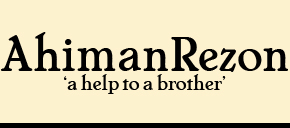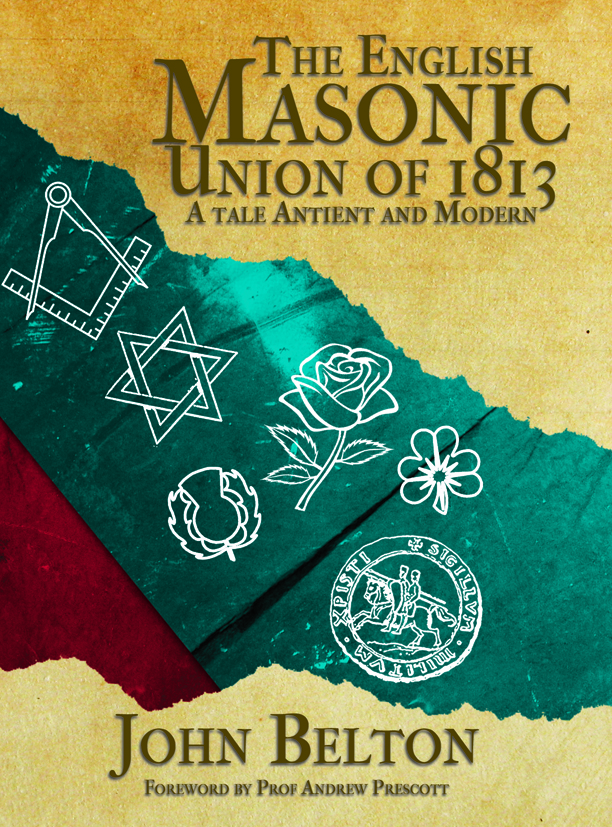This article appeared in No.33 of The Square in June 2012 and is Part 1 of a series of articles on Freemasonry in France
FREEMASONRY IN FRANCE – A BRIEF HISTORY
by John Belton
Freemasonry in France has again been in the news and sadly recent events in the Grande Loge Nationale Francaise (GLNF) brings little credit to freemasonry in general in France or for that matter elsewhere in Europe. Whatever emerges will undoubtedly be different but whether a greater proportion of French freemasons will be deemed “regular” than in the past remains to be seen. This first article will look at the historical background to French Masonic life and the second will explore some of the issues that have recently brought chaos to the GLNF.
According to French masonic legend, the first masonic Lodge in France was founded in 1688 by a Royal Irish Regiment that followed the deposed King James II into exile. However and according to French masonic historians, The Earl of Derwentwater is said to have created a lodge in Paris in 1725 and another, in Dunkirk which claimed to have been constituted from England in 1721. In the mid-1730s it is recorded that the Duke of Richmond (and Grand Master of the Grand Lodge of England) and Bro Desagulier were involved in creating a lodge in France.
One survivor of these early lodges was L’Anglaise No.204 which is still active today. But in reality matters are not as simple as that. Actually there are TWO lodges l’Anglaise 204 nowadays. The original GOdF one had been dormant since the 1877 troubles. The name was revived by the GLNIRFC, ancestor of the GLNF, when the UGLE (under Lord Ampthill) created it in 1913. But the GOdF considered that as just a split (or a hijacking of the name), which it was, and revived and kept the original. The original then left the GODF in 1923 to join the GLDF. A very French Masonic tale indeed! It was formed in Bordeaux when on 17th April 1732 a Captain Martin Kelly (an Irishman) as Master and two Wardens, Nicholas Swinton and Jonathan Robinson constituted a regular lodge (atelier regulier). At that meeting they made one mason and raised another to the third degree and in the following six months made another five masons and raised five to the grade of Master.
Perhaps all of this shows that all sorts of things follow trade and the flow of humanity that accompanies it and clearly it seems that the influence of mariner masons taking masonry to Dunkirk and Bordeaux is just two examples of what went on for the next 150 years with the transfer of ideas by sea being as important as the goods transported. Lodges could spring up in many or indeed any places and in those early days there was little authority to say what could or could not be done.
Anyone familiar with the ways in which our early rituals developed will know of Samuel Pritchard’s Masonry Dissected which was published in 1730. It was an exposure but such was the demand for the words that it was much reprinted; thus it was the first de facto printed ritual and the first printed text of any form of words for the third degree. It found its way to France and there for the next 30 years the ritual developed before coming back to England around 1760.
The first Grand Lodge in France was the Grande Lodge de France formed in 1738, following a brief schism of a year after 1766 the Grand Lodge ceased to meet by Royal decree for five years. At the resumption of Masonic activity in 1772 and until the Reign of Terror there were around nine Grand Lodges and a total of about 1200 lodges. The most significant of these was the Grand Orient de France (GOdF) which was formed in 1773. However all Masonic activity stopped during the most disruptive period of the French Revolution in 1793, only to restart again around 1796 or so.
The restart of masonic activity was a confusion of around ten grand bodies which only slowly resolved itself in the early 1820s. The French Revolution had changed France and the aftermath of the Revolution and the many changes in ruling styles and politics were intensely bad for freemasonry. It split, went underground, merged and unmerged to cope with such times. The two significant bodies which did re-emerge were the Grand Orient de France and the Supreme Council (aka REAA, Rite Écossais Ancien et Accepté, Ancient and Accepted Scottish Rite). There was a clear realisation that such deep fractures between two large bodies were unhelpful to freemasonry and there were attempts at Union in 1819, 1826 and 1841 the latter did at least produce a Pact of Amity. From here till 1870 matters continued largely unchanged but France being the loser in the Franco-Prussian War of 1870 led to the setting up of the Third Republic and the savagery of the Commune in 1871, which actually saw brethren fighting each other on both sides.
The next few years saw some of the most changing events in the Masonic world. The Lausanne Conference of 1875 between the Supreme Councils of the World included discussions on both jurisdiction and joining requirements. The matter of jurisdiction, if the proposals had been agreed, would have allowed the English to exclude the Irish and Scots Supreme Councils from the British Empire while the ‘faith requirement’ would have seen the English SC give up its Trinitarian requirement for the more normal Craft Masonic one of a Supreme Being. In the event neither change took place as an astute Scot by the name of Mackersy wrote a letter and left Lausanne post haste[i]. His letter had the effect of a grenade tossed into the meeting and neither proposal was in the event adopted. The effects of those non-decisions are with us to this day.
The effect of the French socio-political events and of the Lausanne Conference must surely have coloured the next major event. In 1877 the GOdF took the decision that it would no longer be obligatory for candidates to express a belief in “the existence of God and the immortality of the soul” which had previously been in its Constitutions. One of the side effects of this was that a candidate no longer had to take his Obligation on the Volume of the Sacred Law which itself did not have to be present and open, but could be if agreed upon.
Needless to say all these matters are far more complicated and this explanation very simplified and the more curious will have to read elsewhere to fill in the picture. However it is worth reflecting on some parts of the very Frenchness of France because they are as specific to France as the very essence of Englishness or Scottishness is to us. Prior to the French Revolution society in France had been very stratified and they classified this as the three estates. The first estate was the clergy (0.5%), the second the nobility (1.5%) and the remaining 98% of the population was the third estate. The total lack of any changes to this system was what ultimately caused the explosion of the French Revolution when the disenfranchised 98% claimed some rights, which of course they took from the First and Second Estates. So evolved the cry of “Liberté, Égalité, Fraternité”, which translate as Liberty, Equality, Fraternity; and which perhaps are the epitome of ‘Frenchness’. They have had their effects upon French freemasonry which is very different to that in England and a failure to grasp this has perhaps been the cause of much misunderstanding and confusions between the Frogs and les Rosbifs ever since!
The price paid by the GOdF ever since has been to be cast into what is seen by those opposing it as a wilderness but in which it has both survived and prospered. It remains to this day one of the major strands of Masonic thought and style and has lodges and sister bodies in many countries.
Not all lodges or masons agreed with this radical change within the GOdF and the shelter offered by the separate Supreme Council to Craft Lodges resulted in the re-birth in 1894 of the Grand Loge de France (GLdF) which is to this day one of the major French Obediences. It requires a belief in a Supreme Being of all candidates, uses the VSL, can trace its roots back to respectable parentage, only works the three degrees and is, in a nutshell, probably regular but is not recognised. Its ritual is that of the Scottish Rite first three degrees which have the altar at the foot of the East, a cloth “trestle board” in the middle surrounded by the three lights, a chamber of reflection, and the different emphases of the ritual mark another of the great strands of masonic ritual variety which make it such a rich and varying experience. This ritual form is copied widely across Europe, Latin America and elsewhere. The GLdF did not actively seek recognition and it was only after World War I that it obtained recognition from about half the US states because of the welcome it offered American brothers while in France. After the Second World War the GLdF recognised Prince Hall Grand Lodges, and it was maybe this which resulted in the mainstream US Grand Lodges withdrawing recognition. The GLdF however had never been in amity with the three Home Grand Lodges of the British Isles.
Le Centre des Amis, a lodge which had been dormant since 1798 was revived under the GOdF and in the years prior to WWI initiated a correspondence with the then Pro Grand Master of England, Lord Ampthill. The result of this was that in 1913 this lodge together with La Loge Anglaise No.204 of Bordeaux (variously described as independent or resurrected) established La Grande Loge Nationale, Independante et Reguliere pour la France et les Colonies Francaises. The new Grand Lodge gained instant recognition from England and following that from many other mainstream Grand Lodges. With a title as long as that it is probably not surprising that in 1948 they changed to their current title of Grande Loge Nationale Francaise.
All of this does exclude the other French Grand Lodges including the co-masonic and Feminine branches – there is not time or space here. It can be seen that the background to French freemasonry is complex in its history and remains so today. Whether one should feel that the Masonic ‘free market’ of France brings more depth, vibrancy and diversity that the English monoculture is of course a matter for debate. They do however all deserve the respect we should accord to every brother and sister of the Craft. The second part of this article on French Freemasonry will explore more recent events especially those currently wracking the GLNF. They have repeatedly brought freemasonry into the public and legal domain and recognition increasingly being withdrawn by other Grand Lodges. (Thanks to Bro Mike Segall for his corrections of my errors).
[i] The story can be read in much more detail in The God Conspiracy by Jack Buta on the Pietre Stones website.

